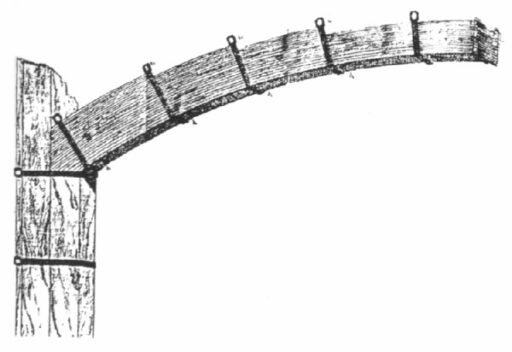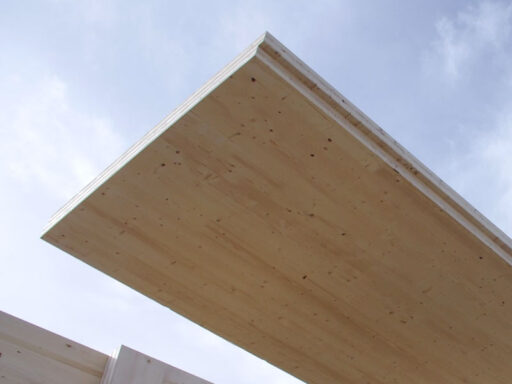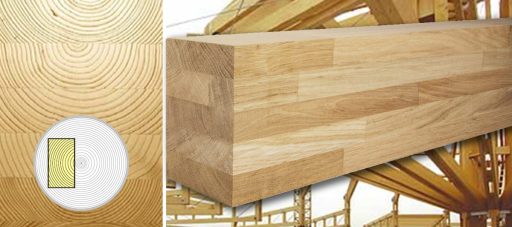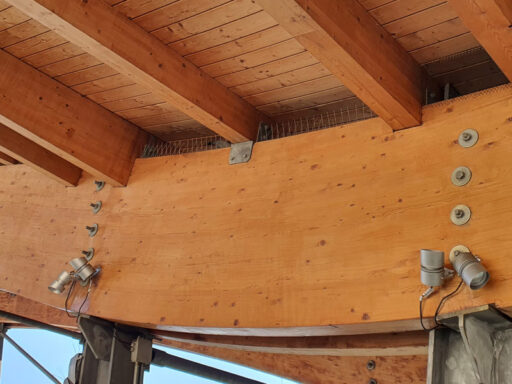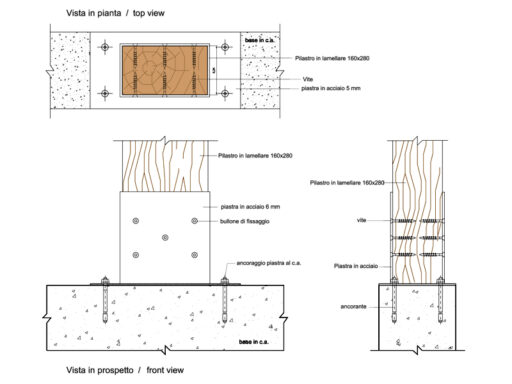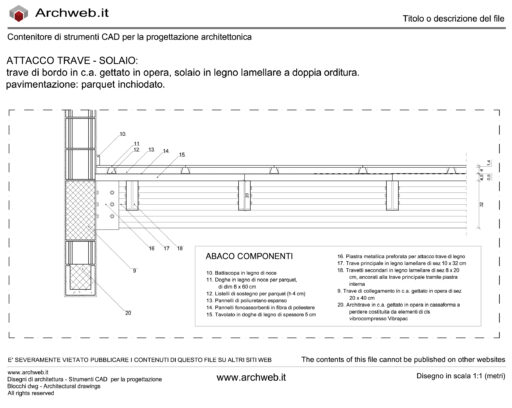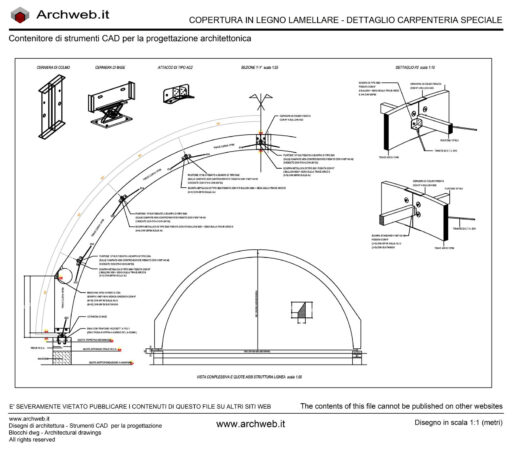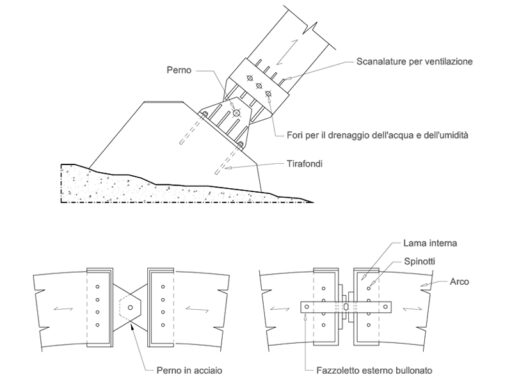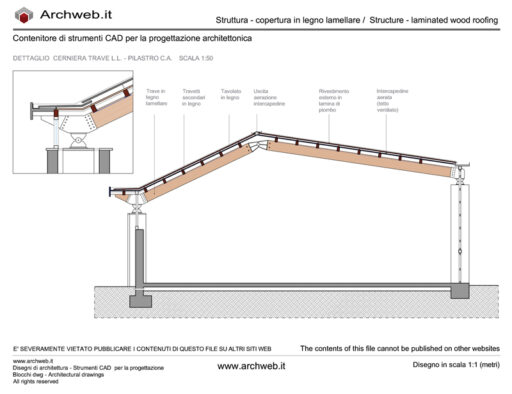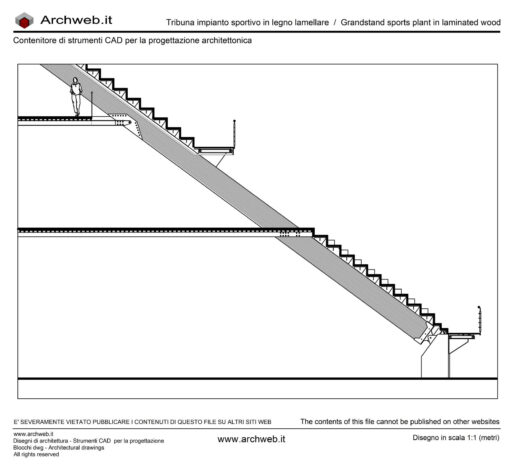Wood for construction
The use of wood in construction
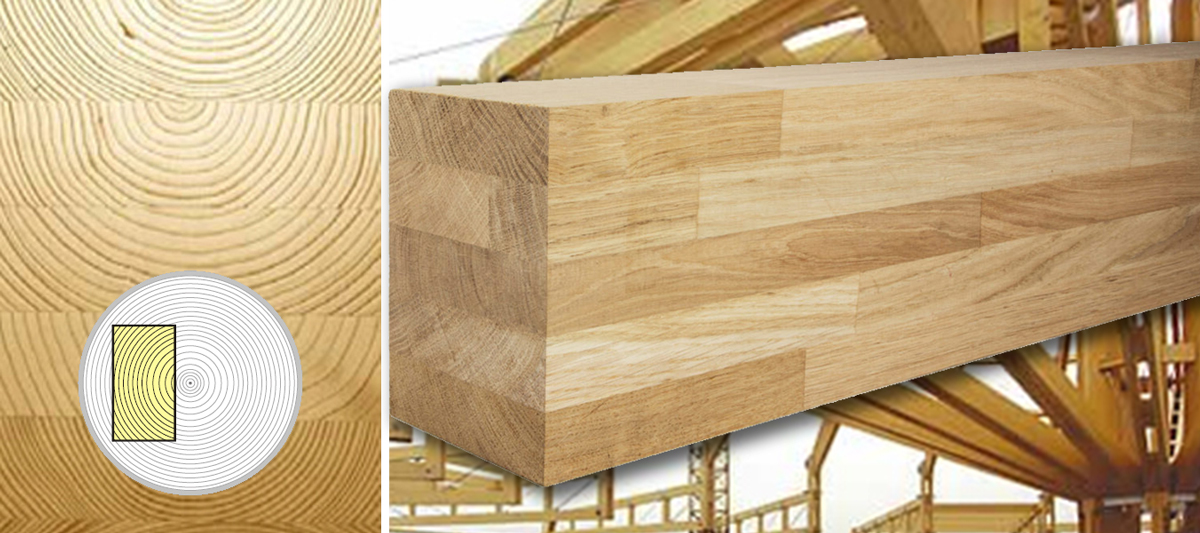
1. Introduction
The raw material for all wood and wood-based products is so-called round wood. From it, through sawing and drying, the “sawn products” are obtained, which, in turn, can be subjected to further processing of the surface according to the needs of the intended use. The possible types of cuts, represented in the following figure, influence the quality of the material and its behavior in case of shrinkage and swelling.
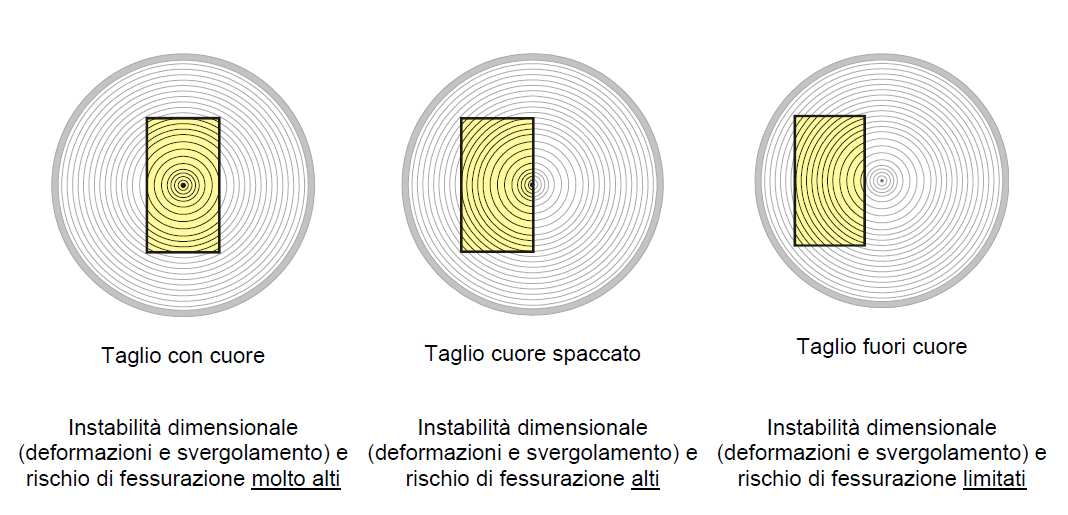
Sawn timber can be classified according to strength and be used with a structural function for linear type elements of solid wood. The evident limits in the dimensions and in the physical-mechanical characteristics, deriving from the fact that the sawn products come from a single log of wood, are overcome thanks to the gluing process, through which it is possible to create linear products (solid wood for construction, DUO / TRIO beams and glued laminated wood.
The sawn products are joined in the longitudinal direction by means of the finger joint (which will be discussed below), thus creating a product of greater length. By gluing the surface, several elements can be joined in a transverse direction, obtaining larger sections; by gluing several layers, the flat elements of solid wood and the plywood are produced.
By means of industrial manufacturing and manufacturing processes, it is possible to produce wood-based products with defined mechanical characteristics and with less dispersion than solid wood.
These include flat or beam-shaped products made from wood veneers, shavings and fibers.
An overview of wood and wood-based products is offered in Figure 2.
Linear wooden construction elements, such as beams or rods, have always been used in the construction sector. A significant evolution has taken place in recent years following the development of flat wood-based construction elements, which have been possible to put on the market thanks to the evolution of processing possibilities and gluing technology.
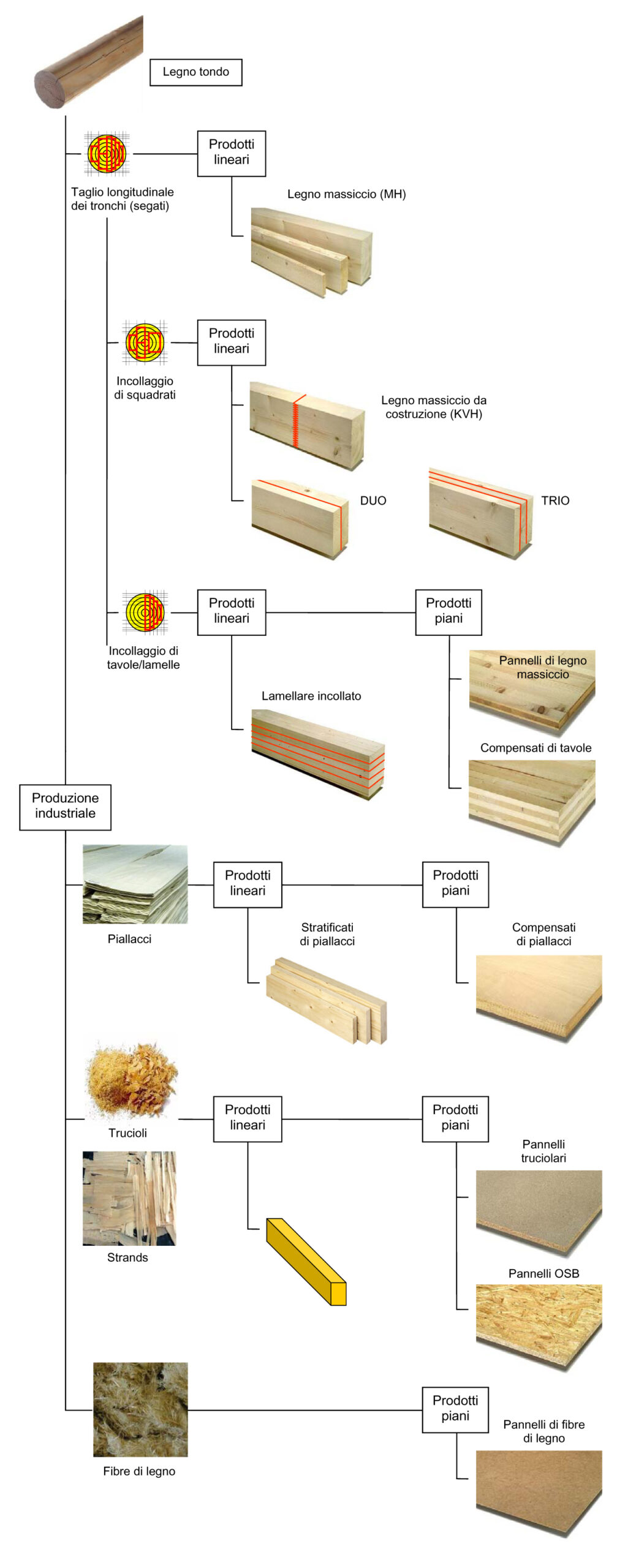
2 – Linear type products
As can be seen from the previous figure, the “first” (in relation to the manufacturing process) product of the linear type is round wood. Under this name we mean coniferous or broad-leaved woods for which other transformations of the section and surface of the wood are not allowed in addition to the debarking and elimination of the gear (possibly rectification of the trunk to obtain a constant diameter).
Due to the persistence of the natural structure (not damaged), especially of the external fibers, the round, compared to the sawn pieces, has better characteristics of resistance and rigidity. The requirements and properties of the round wood product for structural use are contained in the ON standards EN 14544: 2002 and DIN 4074-2.
In addition to the characteristics of resistance, round wood must also meet other needs.
They concern, above all for constructive reasons, the maintenance within certain limit values of the conicity (reduction of the round wood section in the axial direction), of the spiral growth of the shaft and of the ovality (ratio between maximum and minimum diameter in a section) . Round bars are used in construction mainly for scaffolding and scaffolding.
2.1 – Solid wood
The definition of structural solid wood refers to sawn timber intended for load-bearing structures, obtained from round wood by cutting parallel to the axis of the trunk and possible planing, without glued surfaces and without finger joints.
In Central Europe, the wood species used are mainly local conifers such as spruce, silver fir, pine, larch and Douglas fir. For particular uses, the wood of indigenous hardwoods is also used, especially oak, beech, ash, chestnut and locust.
The sawn products are divided into strips, planks (or lamellas), planks and squared timber according to the size and the ratio between height and thickness of the section (based on the ON draft DIN 4074-1: 2004).

Commercial lengths are commonly 4 m for battens, boards and planks. In special cases, assortments ranging from 3 m to 6 m are also available on the market.
As a rule, the squared timber is supplied, according to the customer’s request, in length increments of 0.5 m. However, the maximum length depends on the cut and transport and does not normally exceed 14 m.
The dimensions of the sections vary in increments of 20 mm and, due to the diameter of the log, are limited to about 260 mm (in exceptional cases 320 mm).
Regarding the surface characteristics, solid wood is mainly used in its raw state. As a basic element for glulam, for exposed constructions and profiled elements (e.g. cladding), planing is usually carried out.
The dimensioning of the solid wood elements must take place according to the technical regulations in force on the subject (for example: Final draft prEN 1995-1-1: 2003; ON B 4100-2: 2003; DIN 1052: 2004). The characteristic values for the calculation are defined, on the basis of the resistance classes, in UNI EN 338: 1997 (ON EN 338: 2003) and in DIN 1052: 2004 (or in ON B 4100-2: 2003).
Squared timber is used in almost all construction sectors (construction and bridges). In construction, squared timber is used for running beams on foundations, for pillars and load-bearing beams, for simple or assembled beams, and again for purlins, struts, joists and other elements of a load-bearing structure.
The planks are used for loading surfaces (scaffolding planks, balconies, floors).
The boards are used universally. Depending on the surface processing (raw, planed, milled), they can be used both as raw material for subsequent processing, as formwork or as planed or milled coatings. Boards and planks (lamellae) are also the basic products for the realization of glued laminated wood. Stressed in bending according to the strong axis of the section, they are also used in nailed composite beams.
The battens are mainly used as completion elements and substructures of floors, as coverings for roofs and facades.
The Uso Trieste and Fiume beams are also part of the solid wood products. The Uso Trieste truss comes from debarked spruce wood, with continuous squaring on the four sides.
This type of squaring with bevel over the entire length, following the taper of the wood, only superficially affects the fibers resulting in a higher mechanical resistance. The Uso Trieste truss is suitable for carpentry work and is used for the construction of roofs and coverings. The sections range from 9 x 9 cm up to 30 x 30 cm and the lengths from 3 m to 10 m.
The Uso Fiume truss is made of spruce logs. Planed / axed on 4 sides with parallel section, it maintains the characteristic rounded edges along the entire length. Most of the wood fibers remain intact, giving them excellent mechanical characteristics and elasticity. The Uso Fiume truss is used in restoration works and where particular aesthetic results are required. The sections range from 12 x 12 cm up to 24 x 24 cm and the lengths from 4 m to 8 m.
2.2 – Solid wood products
One of the solid wood products is solid construction wood (KVH). This denomination indicates artificially dried squared timber, planed and classified according to resistance, obtained by heart-split or out-of-heart cut. Compared to conventional squared timber, it has to meet more restrictive classification criteria.
By means of the finger joint it is possible to obtain elements of greater length.
The finger joint is a longitudinal joint between two elements of solid wood, on the ends of which teeth having the same profile and the same pitch have been carved, by means of milling, which fit together without play and which are joined by gluing. The orientation of the teeth can be parallel to the width or height of the section (see figure). For finger joints made on solid construction timber (KVH) both UNI EN 385: 2003 (ON EN 385: 2002) and DIN 68140-1: 1998 apply.

As regards the quality of the product, there is a control carried out by the producer himself and / or a control by an external institute. The result is a homogeneous solid wood material with low deformations and cracks.
In relation to its future use, solid construction timber (KVH) is offered on the market in “visible” and “industrial” quality.
In addition to solid construction timber (KVH), another product is also currently available, also under the registered trademark: solid timber (MH). It too satisfies a series of more restrictive quality criteria than the indications set out in ON DIN 4074-1: 1996 and can be placed in a category that lies between the product “solid wood” and the product “solid construction wood ( KVH) “.
Solid construction wood (KVH) and solid wood (MH) are normally produced from spruce wood; however, it is also possible to use other conifers such as pine, silver fir and larch.
2.3 – Glued laminated wood
Glued laminated wood is a composite product consisting of lamellas usually of a single wood species and glued parallel to the grain.
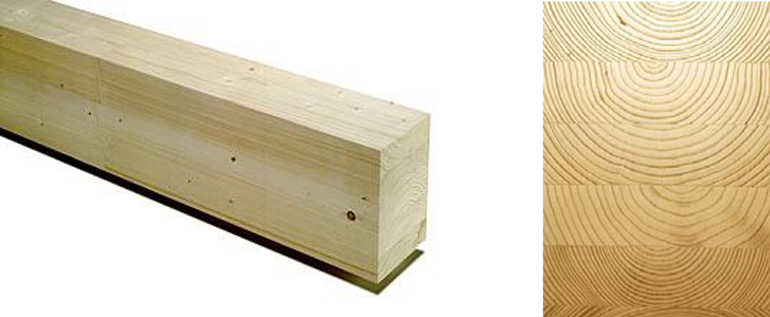
The most important requirements regarding glued laminated timber are found in the draft European standard ON EN 14080: 2001, which refers to a series of other specific standards on laminated timber. Among these, the most important of all are the two standards UNI EN 386: 2003 (ON EN 386: 2002) and UNI EN 1194: 2000 (ON EN 1194: 1999).
For the production of glued laminated wood, wood from conifers is mainly used: spruce, silver fir, pine and larch. However, it is possible to use hardwoods such as beech, ash, oak, locust or chestnut.
The physical-mechanical characteristics of glulam are mainly determined by the quality of the lamellas, the correct construction of the finger joint and the position of the lamellae within the finished element.
According to UNI EN 386: 2003 (ON EN 386: 2002), for the production of laminated wood must be used sawn timber (lamella) classified according to the resistance with visual or mechanical methods. The classification of the slats takes into account the stresses to which they will be subjected.
This classification should aim at the determination of those characteristic parameters of the lamellas that most influence the mechanical properties of the glulam. According to the current state of knowledge and research, this mainly concerns tensile strength and tensile modulus E (see Figure).
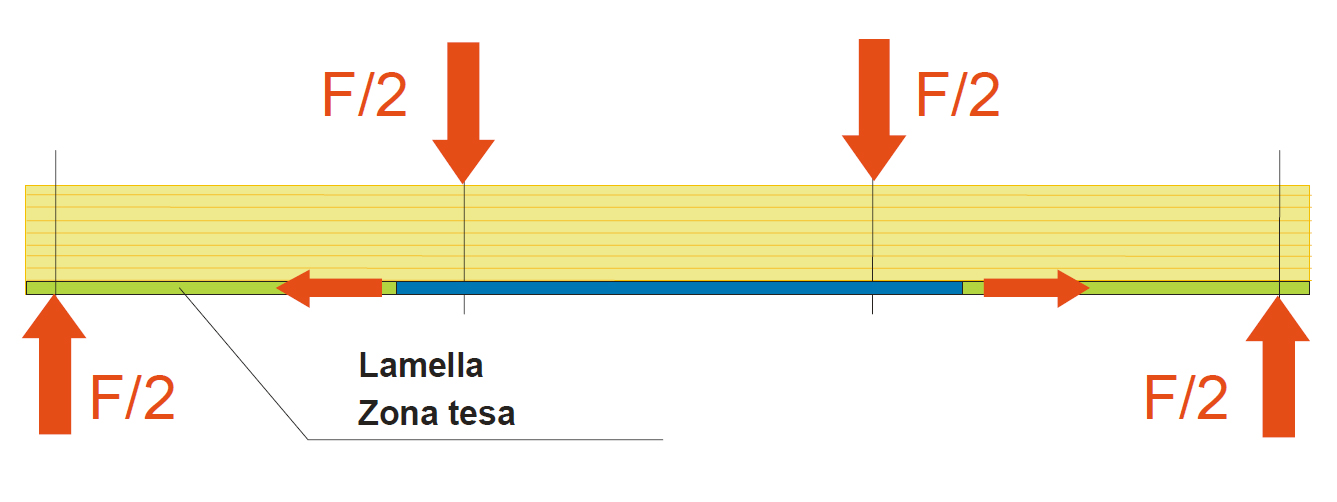
This fact, based on experimental results, is taken into account in the so-called “beam model” of glulam. According to this model, the basic parameters of glued laminated wood that determine its belonging to a resistance class according to UNI EN 1194: 2000 (ON EN 1194: 1999), i.e. the flexural strength and the E modulus of flexion, are mainly influenced by the tensile characteristics of the individual lamellas.
In addition to the properties of the classified lamellas, and among these especially those relating to the tensile behavior, the resistance of the structural elements of glued laminated wood is also influenced by the butt joint of the lamellas, the finger joint already mentioned in the paragraph dedicated to solid construction timber (KVH). Only thanks to the finger joint is it possible to produce a “continuous lamella” and therefore glued laminated wood. The butt joint of the individual lamellas, in the form of a finger joint, must be made observing the limitations given by the relative UNI EN 385: 2003 (ON EN 385: 2002) standard. Depending on the strength class of the glulam, the finger joint must achieve well-defined values of the flexural and tensile strength.
The potential of this joint mainly depends on the geometric characteristics of the teeth and the quality of production, which in turn depends on the production plants. The continuous lamella thus created has, based on the wood species used and the type of intended use, a maximum final thickness of 45 mm.
For linear laminated wood structural elements produced from softwood timber, the final thickness of the lamellas is usually between 32 mm and 40 mm. The final width of the slats having a thickness of d = 40 mm, according to the service class, is at most equal to b = 250 mm (for class 3) or b = 300 mm (for class 1).
As regards the position of the lamellae inside the finished package, it must be taken into account that the “right” part of the board (the one closest to the pith) must always be on the same side.
In laminated wood of service class 3, both external lamellas must have the “right” side facing outwards (see Figure).
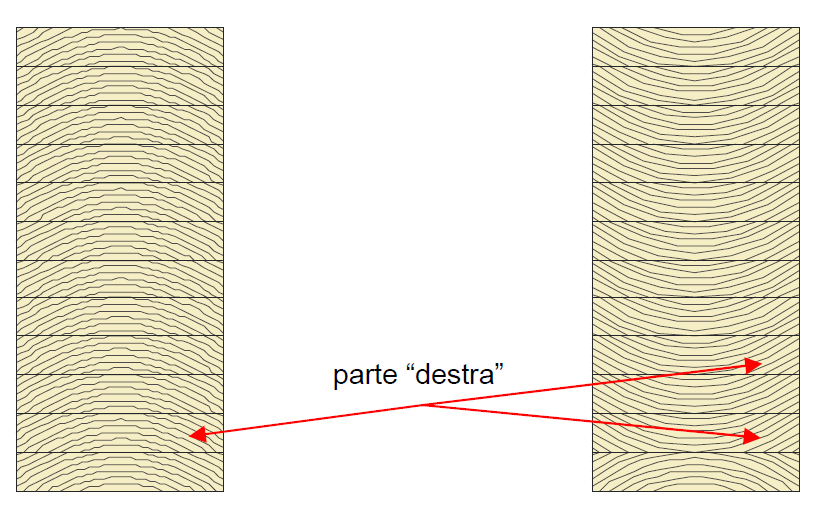
The standard for the production of glued laminated timber (UNI EN 386: 2003 – ON EN 386: 2002) distinguishes between glued laminated timber laminated horizontally or vertically; it should be emphasized that the resistance classes of glulam, defined in UNI EN 1194: 2000 (ON EN 1194: 1999), are valid for packages consisting of at least four or more horizontally glued lamellas.
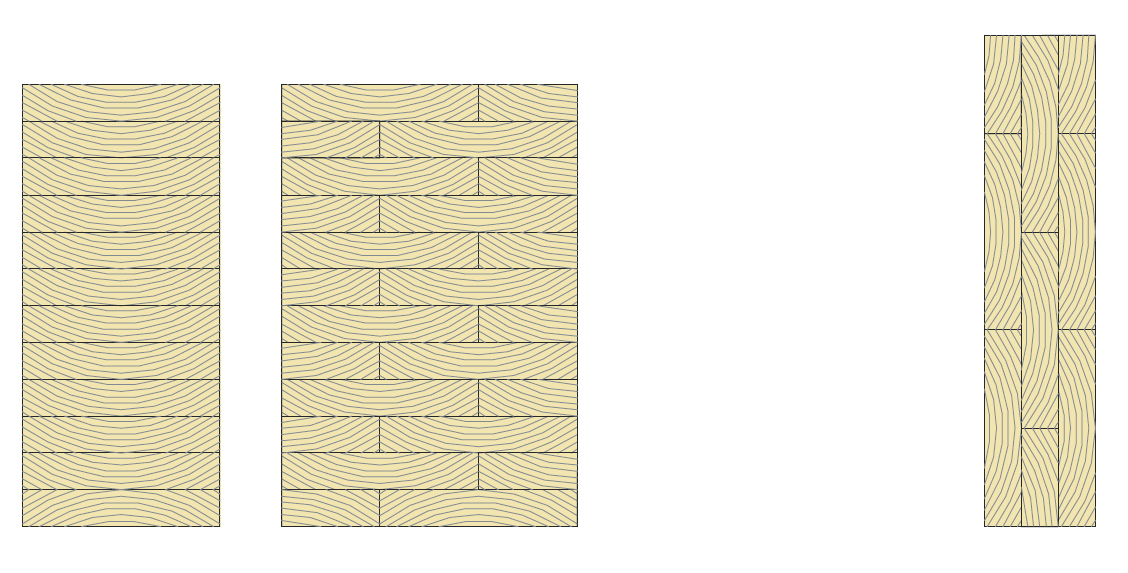
In the context of horizontally laminated glued laminated timber, the UNI EN 1194: 2000 (ON EN 1194: 1999) standard distinguishes between homogeneous sections (indicated by adding h, for example GL 24h) and combined sections (indicated by adding c, for example GL 24c) . The former consist of lamellae of the same classification category (resistance class of the lamellae) and of the same wood species (or combination of wood species). The combined sections, on the other hand, provide internal and external lamellae belonging to different categories (resistance classes of the lamellae) and wood species.
The following figure represents two sections of homogeneous and combined lamellar respectively.
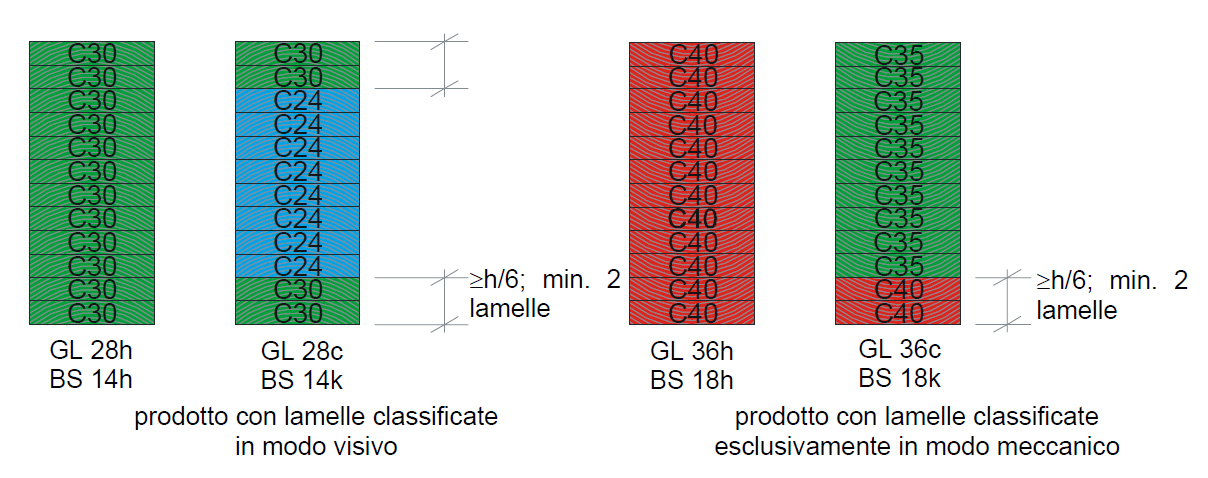
Standard linear products, usually used in construction for walls, roofs and floors, have, in principle, sections with a width ranging from a minimum of 60 mm up to a maximum of 260 mm (in increments of 20 mm) and a height ranging from 100 mm up to 1300 mm (always in increments of 20 mm).
The maximum length of the glued laminated timber industrial product, as standard commodity, is approximately 18 m.
If glulam is used as a special product in building construction, other dimensions are also available.
Source: Wood products for construction
Gerhard Schickhofer – Andrea Bernasconi – Gianluigi Traetta
The use of wood in construction
www.promolegno.com






























































